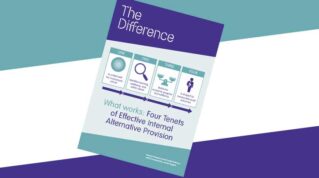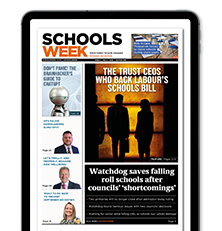The Covid squeeze on pupil outcomes “has started to wane”, but the disadvantage gap continues to be “substantial” as schools deal with the long-term impact of the pandemic.
The findings came in a National Foundation for Educational Research (NFER) report for the Education Endowment Foundation, examining the effects of the virus outbreak.

Reacting to the study, Association of School and College Leaders general secretary Pepe Di’Iasio called for a “renewed focus on low-attaining pupils and closing the disadvantage gap”.
“It’s vital that schools have the resources they need to support disadvantaged pupils, who have been disproportionately impacted by the pandemic.”
The researchers followed a group of children now in years 4 and 5, who were “at the very start of primary school” during lockdown in 2020, across 59 schools.
Here’s what you need to know…
1. Covid impact ‘waning’
In reading and maths, both cohorts witnessed their Covid gaps – the differences between pre- and post-pandemic scores – “significantly” reduce since 2021.
The report said the “negative impact of school closures seen in the immediate years” following the virus outbreak “has started to wane”.
For year 4 maths and year 5 reading, “there was no significant difference in pupils’ performance compared with” pre-Covid levels in 2017.
Meanwhile, children were at least two months ahead of expectations seven years ago in year 4 reading and year 5 maths.
The NFER believes this suggests the “strategies, which schools have been putting in place to support recovery, are reducing the impact of the disruption to pupils’ learning”.
2. ‘Substantial’ disadvantage gap remains
The gap between results for poorer children and their more affluent classmates has narrrowed since 2021. However, a “substantial disadvantage gap remains”, the researchers said.
“We observed a reduction in the disadvantage gap in year 4 reading and… mathematics since we first measured it in spring 2021, but we did not see this reduction with the year 5 cohort.”
Overall, the disadvantage gaps are wider than those reported pre-pandemic. This shows “continued targeted approaches are needed” to address the issue.
3. Concerns for low attainers
The proportion of year 5 children deemed the “very lowest attainers” for scoring fewer marks than required to be given a standardised score in NFER reading tests is double the numbers seen in 2017.
Researchers also witnessed an increase in the percentage of pupils considered “unable to access the curriculum”, meaning they did not take the relevant 2023-24 assessments.
“Overall, 5.7 per cent of year 5 and 3.6 per cent of year 4 pupils were indicated as such, which is far higher than the national percentage (around 1 per cent) indicated on Department for Education key stage 2 attainment reports.”
The report noted the NFER assessments are optional and, as many of these pupils achieved low scores in 2022-23, it’s feasible “their schools decided not to ask… [them] to undertake the tests in 2023-24”.
“This may be masking a tail of low attainment not observed this year, but [that is] potentially still an issue.”
4. Long-term Covid impact
Among the most common challenges reported by schools were absences and “difficulties obtaining external support” for children.
Seventy-five per cent also saw “increased workload due to pupils’ behaviour or wellbeing needs”.
Small group sessions were most often used by the schools to aid catch-up work (82 per cent). Meanwhile, the proportion using one-to-one support fell by up to 25 percentage points between 2023 and 2024.
Almost all the schools involved in the study “were prioritising additional support for very low-attaining pupils, and two-thirds (fewer than last year) were doing so for disadvantaged pupils”.
5. ‘Give schools resources they need’
Just over 40 per cent of the schools had accessed the National Tutoring Programme to aid learning recovery across both year groups (37 per cent for maths and 31 per cent for reading).
A smaller proportion provided tutoring not funded through the NTP (12 per cent for mathematics and 14 per cent for reading). The programme, launched during the pandemic, came to its planned end in August.
The NFER said its study “highlights the importance of policymakers ensuring schools have the appropriate resources to identify not only learning recovery needs, but the wider support pupils need”.
“Tackling these challenges to pupils’ learning, engagement, and wellbeing may require a new approach, away from ‘learning recovery’ directly to a more holistic approach within and beyond the school community.”
















Your thoughts